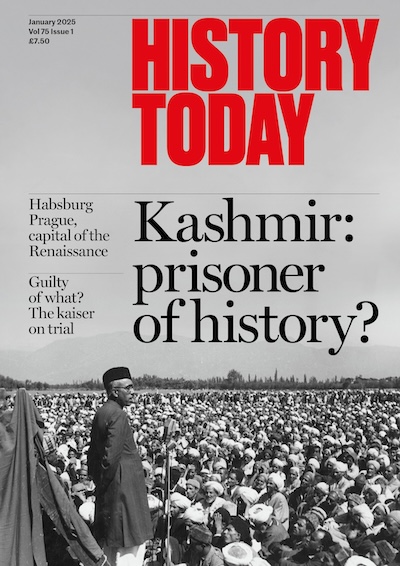The Liberation of Peru
José de San Martín and his forces liberated Peru and proclaimed its independence from Spain on 28 July 1821.

The two leading figures of the South American wars of independence were Simon Bolivar in the north and José de San Martín in the south. Their paths met in Ecuador, where the modest and unselfish San Martín came off second best. While he is honoured in Argentina as a national hero, in South America at large Bolivar is revered almost as a god.
José de San Martín was born to Spanish parents in 1778 at Yapeyu, now in Argentina, where his father was governor. The family returned to Spain when he was a small boy and he was educated in Madrid and made his career in the Spanish army, rising to be a lieutenant-colonel of cavalry. In 1811 with Spain under the French heel and Joseph Bonaparte on the throne, he resigned his commission and went to Buenos Aires to fight for independence. He reorganised the army and in 1817 brought off one of the most remarkable feats in military history by leading a force of 5,000 men through the towering Andes peaks to invade Chile. After securing Chilean independence, with a fleet commanded by the adventurous Lord Cochrane, he invaded Peru and declared independence in Lima in 1821, with himself as dictator.
Meanwhile, however, Simon Bolivar had been freeing Venezuela, Colombia and Ecuador from Spanish imperial rule and it was essential to unite the two armies. The generals met at Guayaquil in Ecuador in 1822. They conferred in secret, but it is thought that San Martín offered to serve under Bolivar. The offer was refused and San Martín, unwilling to endanger the cause, generously resigned, so as to leave Bolivar in unchallenged command. The following year he went into exile in Europe, where he would spend almost the last thirty years of his life, out of action and in deepening poverty. He was briefly in London in 1824, and a plaque at 23 Park Road NW1 marks his stay, but lived in Brussels and later in Paris, looked after by his daughter Mercedes and her husband, until he died at Boulogne in 1850, aged seventy-two.
San Martín bequeathed his sword to Juan Manuel de Rosas, the Argentine dictator. In 1880 his remains were transferred to Buenos Aires and ceremoniously buried in the Metropolitan Cathedral, and in 1897 the Rosas family formally presented his sword to the Argentine nation. It was given a place of honour in the Historical Museum. There’s a San Martín Museum in Buenos Aires today and a colossal monument at Mendoza to the crossing of the Andes.




